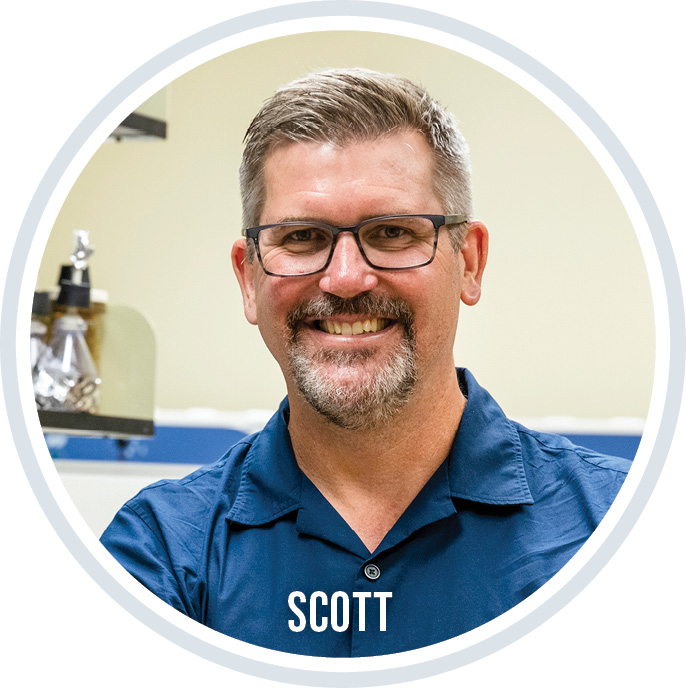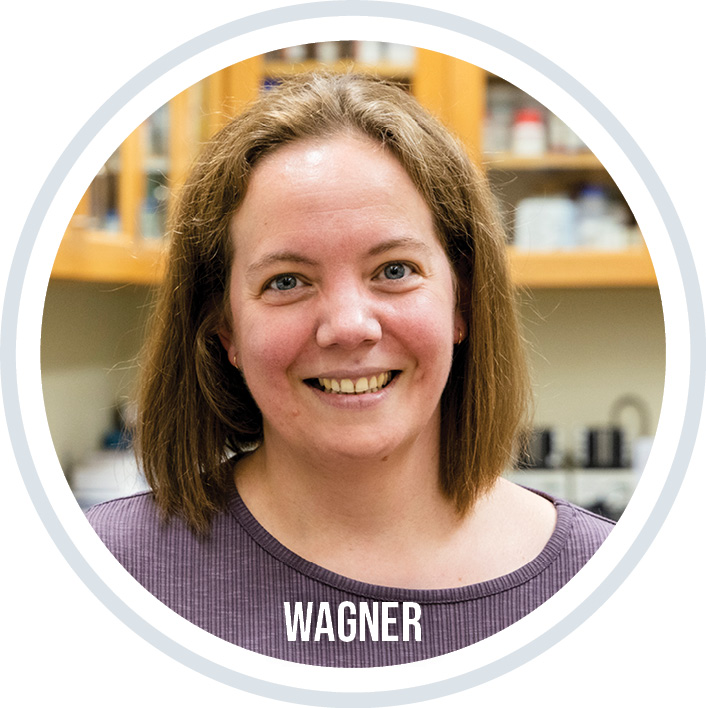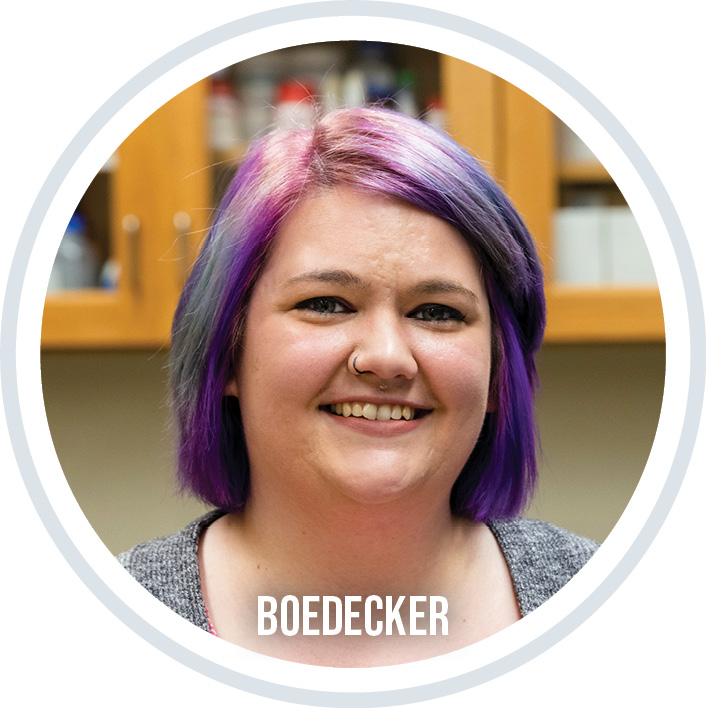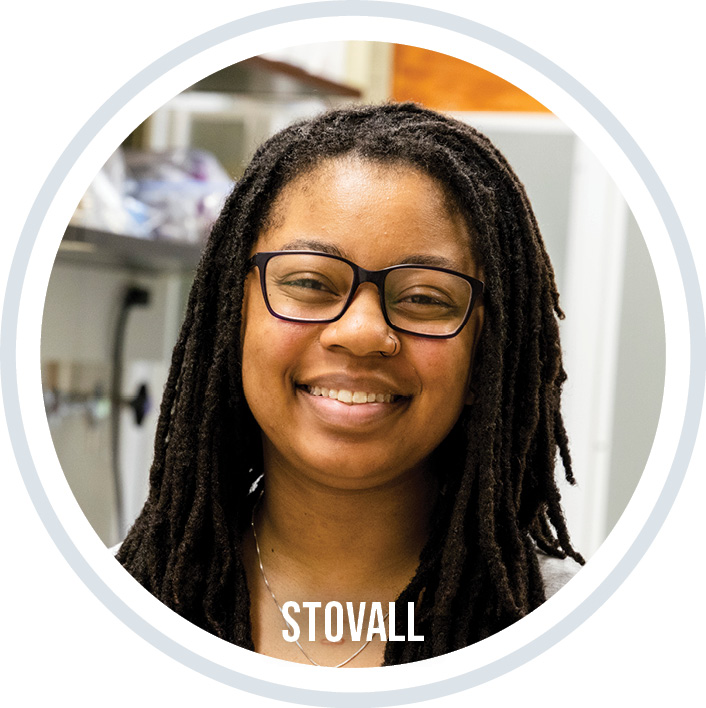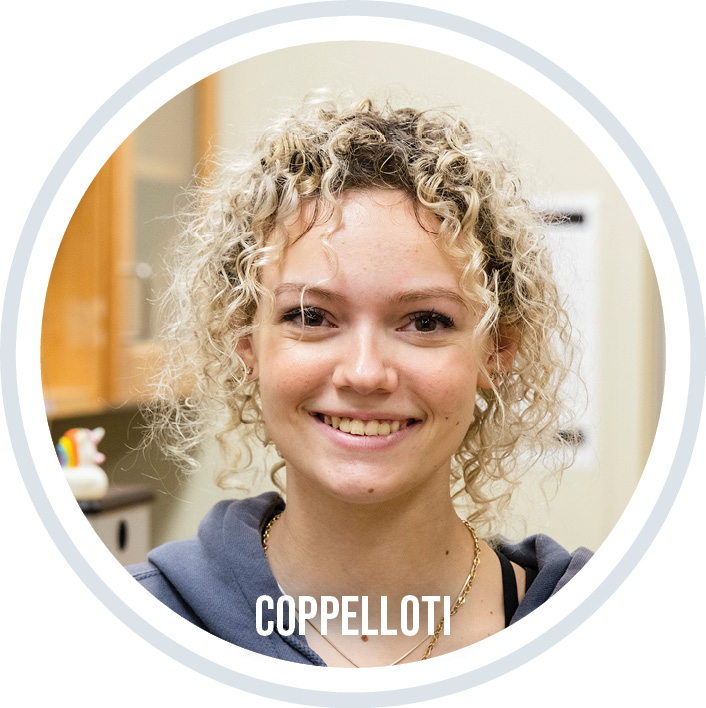360-Degree Mentorship
Baylor's Research Ecosystem
Thad Scott, Ph.D. ’06, professor of biology, is one of dozens of Baylor professors who lead laboratories across campus that incorporate undergraduate students, graduate students and postdoctoral researchers. His Limnology and Aquatic Biogeochemistry Lab provides an example of the ecosystem within those labs that advances human understanding, trains students and produces top-tier research.
“Working with students in research at a research institution, in a lab that’s always filled with something fresh and new, is really the best life ever,” Scott says.
While Scott and his students study the impact of human activities in rivers and lakes and translate their findings into new knowledge, they also engage in a cycle of mentorship, hands-on experience and engaged learning that produces the next generation of science professionals.
A visit into Scott’s lab at the Baylor Sciences Building showcases this 360-degree transfer of mentorship and support.
Small Businesses
Scott’s Limnology and Aquatic Biogeochemistry Lab group — consisting of Scott, two postdoctoral researchers, six doctoral candidates and three undergraduate students — studies and mitigates challenges that diminish water quality and supply. Each member brings different skills, backgrounds and future interests to the distinct roles they serve. On a day-to-day basis, they all have responsibilities to advance the research, meet the needs of external funders and, in some cases, serve as both student and teacher.
For professors like Scott, operating a lab is like running a small business. The professor seeks opportunities for external funding and grant projects within his or her wheelhouse. Scott’s postdoctoral researchers and Ph.D. candidates are supported by external funding he procured from the National Institutes of Health and the State of Oklahoma for specific research projects.
Postdocs and students conduct the research in most labs, which amplifies the importance of finding the right students with a diverse set of skills who collectively pursue each lab’s goals as they build experience toward their own future careers. Professors do their part to facilitate that and unleash lab members to utilize their own knowledge and creativity within that approach.
“Each person is an individual, and there’s no single mold that works for every single postdoc or student,” Scott says. “There’s a framework that may fit for many of them, but it’s important for me to know everyone well enough to understand what those individual needs are.”
Weekly one-on-one meetings and regular lab-wide meetings mirror the same types of direct report conversations or staff meetings found in most businesses. As individual members are empowered to interact, study and discover, the lab environment yields a learning ecosystem that advances the Baylor mission in a distinct way.
Effective Teamwork
Within the context of a lab group, postdocs sometimes report to the professor and provide leadership to the doctoral candidates. Postdocs, who are one step from being research professors, sometimes learn from the doctoral candidates. Doctoral candidates sometimes train the undergraduates, who sometimes conduct the research activities themselves. A learning style that rarely takes place in another setting is fostered in this complexity.
Effective teamwork within a lab facilitates a natural versatility among its members. Each has his or her own area of expertise, but the exchange of interaction amidst the work educates them in the others’ specialties.
Nicole Wagner, Ph.D., a postdoctoral researcher in Scott’s lab, will begin her independent teaching and research career as an assistant professor of limnology at Oakland University in Michigan this fall. Her focus in the lab is harmful algae blooms, but Wagner has increased her diversity of science by conducting research alongside doctoral candidates and fellow lab members Ashlynn Boedecker and Jasmine Stovall, M.S. ’18.
“I never really thought about atmospheric gasses or phytoplankton until I joined this lab and learned from Ashlynn and Jasmine,” Wagner says. “This is an experience that has really helped me build and refine my mentorship skills.”
Boedecker is an expert on atmospheric gasses in lakes and rivers, while Stovall focuses on microscopic organisms like phytoplankton.
“We’ve had tons of conversations that led to ideas and collaborations that forced me to think out of my phytoplankton box,” Stovall says. “We spark each other to ask questions we might not have otherwise, and that starts the wheels turning and leads to new ideas.”
Doctoral candidates reside at an experiential level between postdocs and undergraduate students. They anticipate the needs of professors and postdocs while looking for ways to educate and mentor the undergrads, who are learning the ropes. The position promotes problem solving that relates to the lab’s research and operation.
“Hypothetically, if there’s a problem, I have to look at it and ask: Is this something I can figure out easily?” Boedecker says. “If it’s something I can Google or figure out myself, I do. But some things, you need a push because there’s a connection I’m not making, and I can ask Nicole or Thad or make them aware.”
Questions are commonplace for new lab students, and undergraduates have plenty for those whose academic careers are a few years beyond their own. Sara Coppellotti, a rising junior biology major, joined the lab during her sophomore year and was immersed in a world of machinery, data and people who opened a new world of scholarship and opportunity.
“I initially wanted to go to med school; but, after being here at Baylor and experiencing classes like Dr. Scott’s biology class, I’ve been leaning more toward research,” Coppellotti says. “I’m helping them with whatever they need and have a ton of questions. A lot of it is stuff I wouldn’t have been able to learn in class alone.”
Boedecker has taught Coppellotti how to operate equipment, which helped integrate her within the lab and gave her the confidence to contribute. As Coppellotti learns the day-to-day operations of the lab, she also sees potential mentors who are close to her own age but with the experience that comes from having been in her shoes as she discerns her goals in higher education.
Professional Trees
Learning from more academically advanced lab partners provides each person with a model of the type of professional they’d like to be. It works down the ladder as well: Each person is learning how to mentor, answer questions, pursue advanced degrees and be a professional scientist through real-world experience.
“Science as an endeavor is done by professionals, and that’s what they’re learning to do,” Scott says. “Being a professional scientist is not about turning knobs on an experiment; it’s about interacting, teaching and building off one another.”
Within that ecosystem, Scott is a branch of a research tree now creating his own branches. These “coaching trees” are the fruit of Baylor’s investment in high-level research that leads to metrics like R1 attainment and to the development of mission-minded problem-solvers throughout higher education.
When Scott was a Baylor doctoral candidate, he worked with Robert Doyle, B.S. ’81, M.S. ’85, Ph.D., associate chair of biology, director of the Center for Reservoir and Aquatic Systems Research and biology professor, and Owen Lind, Ph.D., longtime Baylor biology professor.
“I’m part of a bigger tree,” Scott said. “It’s great to be part of that family, and now I’m starting to have my own tree. It means a lot to play a small role in extending that and to have these lifelong relationships. Experiencing that is the most fulfilling thing ever.”
